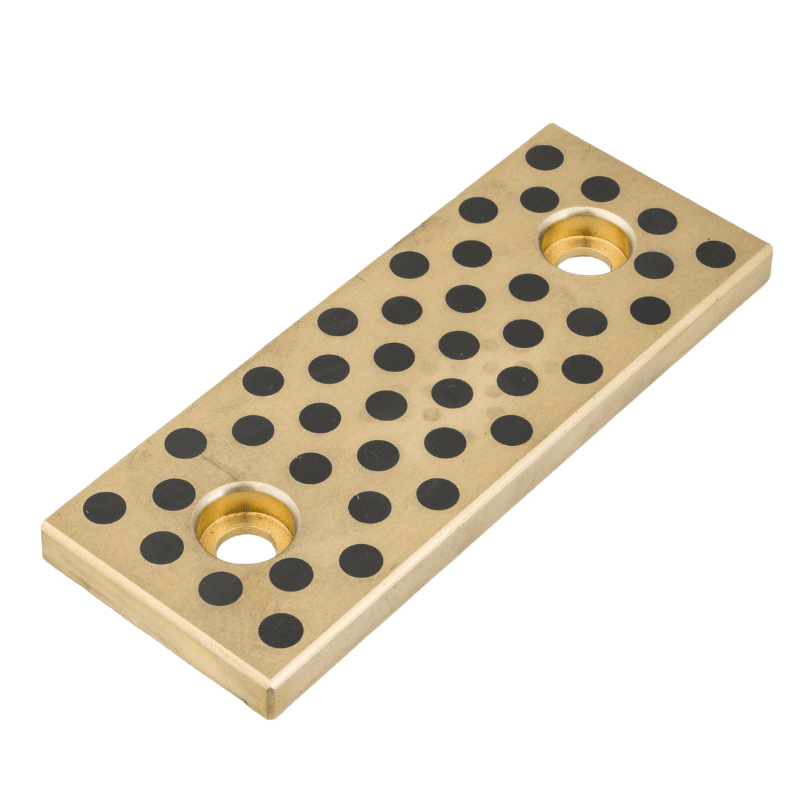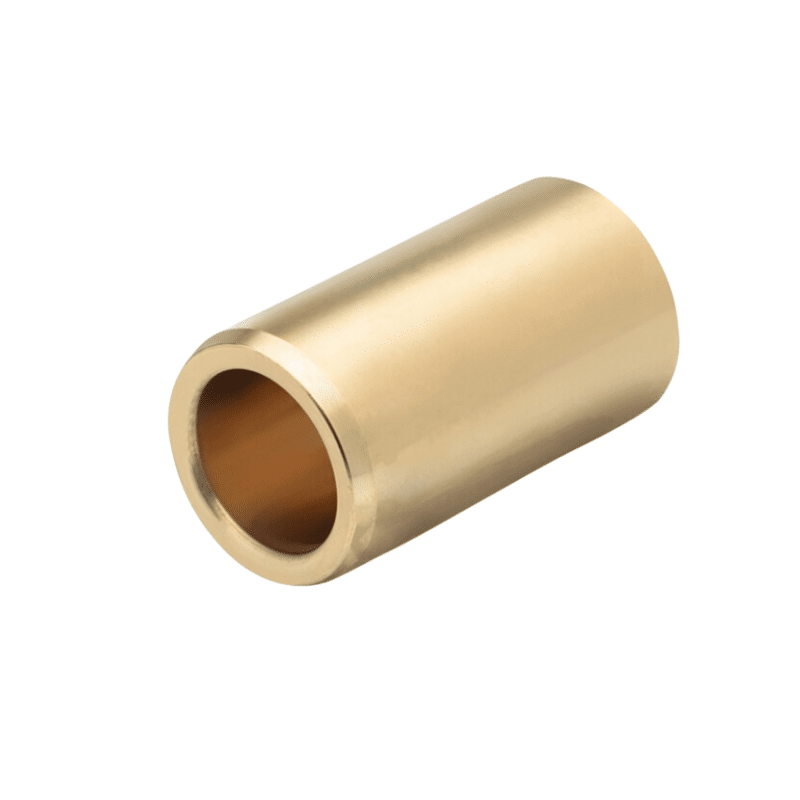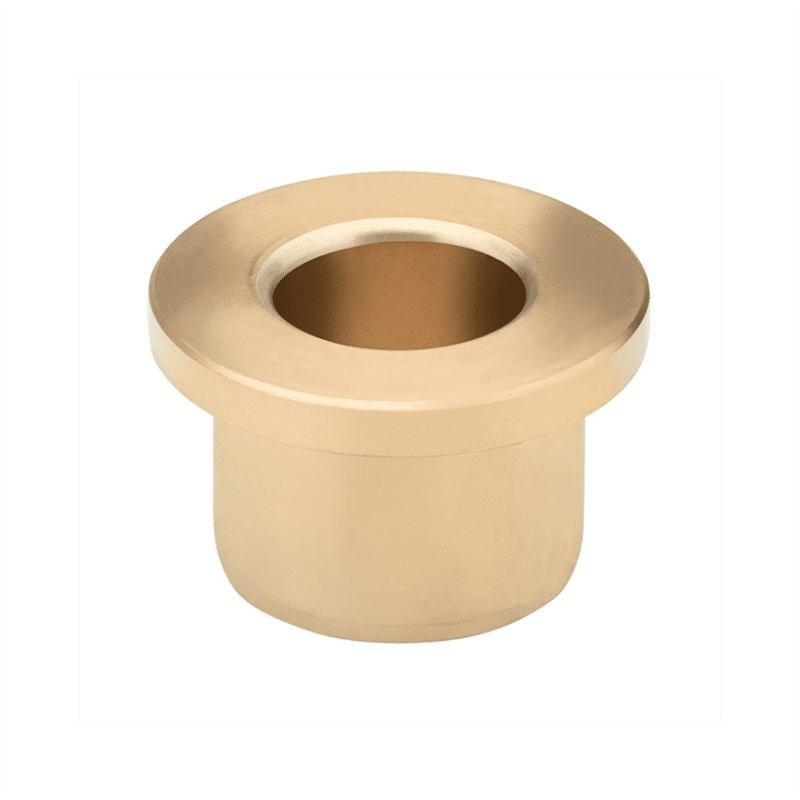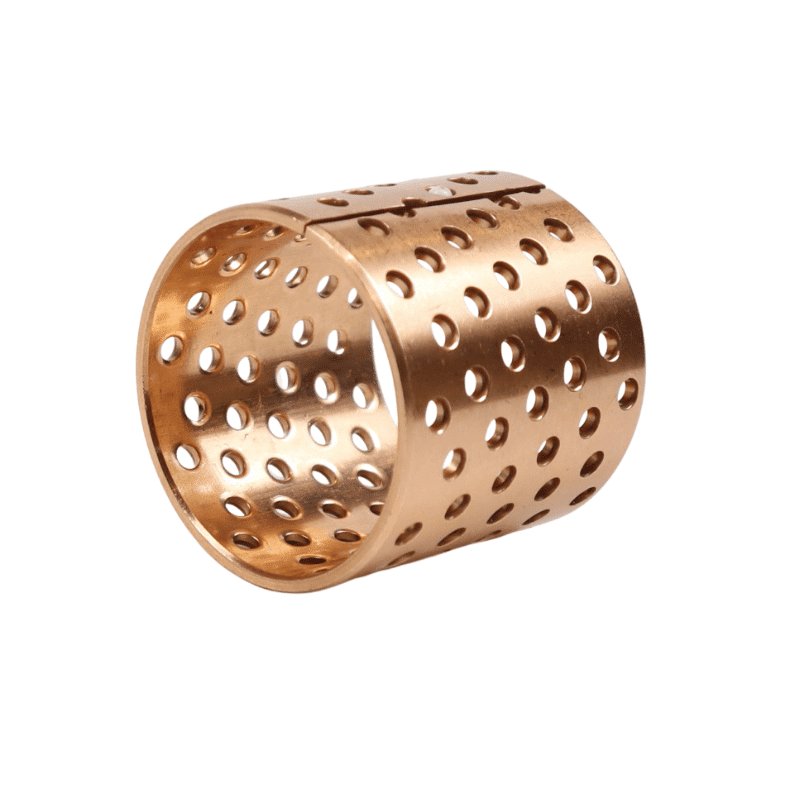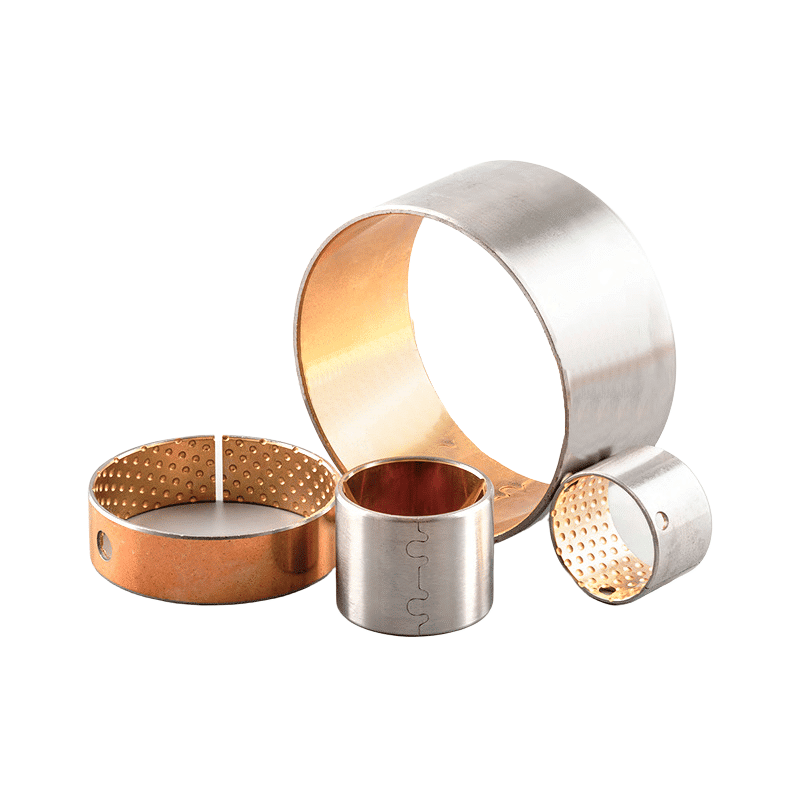Bushing vs Bearing: Making the Right Choice for Your Application
Bushing vs Bearing: Making the Right Choice for Your Application
Say goodbye to the hassle of frequent lubrication maintenance. Our self-lubricating technology ensures smooth operation and reduces wear and tear, extending the lifespan of your equipment. Experience uninterrupted productivity and cost savings as you bid farewell to the need for messy lubricants and time-consuming upkeep.
Manufacturing on Demand, alternative solutions
Bushing vs Bearing: Making the Right Choice for Your Application
Bushings, also called plain bushes, plain bushings, or sleeve slide bearings, reduce friction between two surfaces sliding against each other. Learn more!
Bushing vs bearing : Bushing and bearings are both mechanical components used to reduce friction and support rotating or sliding parts in various machines and equipment. They serve similar purposes but have different designs and applications. Here’s a comparison of bushings and bearings, as well as a brief discussion of sliding bushings:
- Bushing:
- A bushing, also known as a bush, is a cylindrical or sleeve-like component made of materials such as bronze, brass, plastic, or other metals. It is inserted into a housing or a bore to provide a low-friction surface for a shaft or pin to rotate or slide within.
- Bushings are generally simple and cost-effective solutions for reducing friction and wear in mechanical systems.
- They can be used in various applications, including automotive, industrial machinery, appliances, and more.
- Bearing:
- A bearing is a more complex component that includes not only a supporting surface (similar to a bushing) but also a set of rolling elements (such as balls or rollers) that allow for smoother and more efficient motion.
- Bearings come in various types, including ball bearings, roller bearings, needle bearings, and more. Each type is designed for specific load and speed conditions.
- Bearings are often used in applications where higher precision, load-carrying capacity, and reduced friction are essential. They are common in industries like automotive, aerospace, and heavy machinery.
Sliding Bushing vs. Bearings:
- Sliding bushings (plain bushings) operate on the principle of sliding contact between the shaft and the bushing’s inner surface. They provide a lower degree of precision and reduced load capacity compared to bearings. Sliding bushings are often used in less demanding applications where cost-effectiveness is a priority.
- Bearings, on the other hand, incorporate rolling elements that roll between the inner and outer races, reducing friction and allowing for smoother motion. Bearings are preferred when precision, high load capacity, and reduced friction are required. They are also capable of handling both radial and axial loads.
In summary, the choice between a bushing and a bearing depends on the specific requirements of the application. If cost-effectiveness and simplicity are essential, sliding bushings may suffice. However, when precision, high load capacity, and reduced friction are critical, bearings are the preferred choice. The selection also depends on factors such as load type, speed, operating conditions, and available space.
Bushing vs Bearing: Making the Right Choice for Your Application
Bushings, which are also referred to as plain bearings, plain bushings, or sleeve bearings, serve the purpose of minimizing friction between two surfaces that slide in contact with each other. Discover further details about their functionality!
Wrapped Bushing Tolerances, Steel Backed PTFE Plastic Bearings with Steel Shell, materials Triple-layers
Material: Triple-layer bushing
Shaft dia: f7 (< 55 mm id.)
h8 (> 55 mm id.)
Housing: H7
Tinplated steel layer (anti-corrosive)
Sintered, multiporous bronze layer
PTFE sliding surface (self-lubricating)
Bushings are a type of sliding bearing manufactured by VIIPLUS Bearings. These bushings are designed for various industrial applications and offer several advantages:
- Low Friction: Bearing bushings are known for their low friction properties, which make them suitable for applications where smooth and precise movement is required.
- High Load Capacity: These bushings are capable of handling high loads, making them ideal for heavy-duty machinery and equipment.
- Self-lubricating: Bushings are self-lubricating, reducing the need for external lubrication and maintenance.
- Noise Reduction: They contribute to noise reduction in machinery, which is crucial for applications where noise control is essential.
- Corrosion Resistance: Slide Bushings are often made with materials that provide excellent corrosion resistance, ensuring durability in harsh environments.
- Customization: We offers various types of PTFE Bushings, including PTFE Bushing Bearings and Metal Backed Bearings, allowing customers to choose the most suitable option for their specific needs.
In the world of mechanical engineering and machinery, the terms “bushing” and “bearing” are often used interchangeably, but they serve distinct purposes in various applications. Understanding the differences between these two components is crucial for selecting the right one for your specific needs. In this article, we will delve into the nuances of bushings and bearings, particularly focusing on the advantages of self-lubricating bushings.
Bushing vs. Bearing: The Basics At their core, both bushings and bearings are designed to facilitate movement between two parts while minimizing friction. They play a pivotal role in ensuring machinery operates smoothly and efficiently. However, it’s essential to recognize that bushings are a specialized type of bearing tailored for specific applications.
- Bushings: The Precision Solution Bushing is a type of bearing known for its precision and versatility. It offers a range of benefits that make it ideal for particular scenarios:
- Reduced Impurities: Bushings are excellent at minimizing the risk of impurities infiltrating the moving parts. This is especially crucial in environments where contamination can lead to premature wear and tear.
- Noise and Vibration Dampening: Bushings are effective at dampening noise and vibrations, contributing to a quieter and smoother operation of machinery. This quality is essential for applications where noise reduction is a priority.
- Stable Friction and Torque: Bushings provide stable friction and torque characteristics, ensuring consistent performance over time. This predictability is valuable in applications where precise control is required.
- Self-Lubrication: One of the standout features of bushings is their ability to be self-lubricating. This means they can operate efficiently without the need for external lubrication, reducing maintenance requirements and extending their service life.
- Bearings: The Heavy-Duty Option While bushings excel in precision and self-lubrication, traditional bearings are better suited for heavy-load and axial force applications. Bearings can handle substantial loads and offer robust performance in demanding environments. However, they often require more maintenance due to the need for regular lubrication.
Bushing vs Bearing, Bronze and Wrapped Steel Bushes
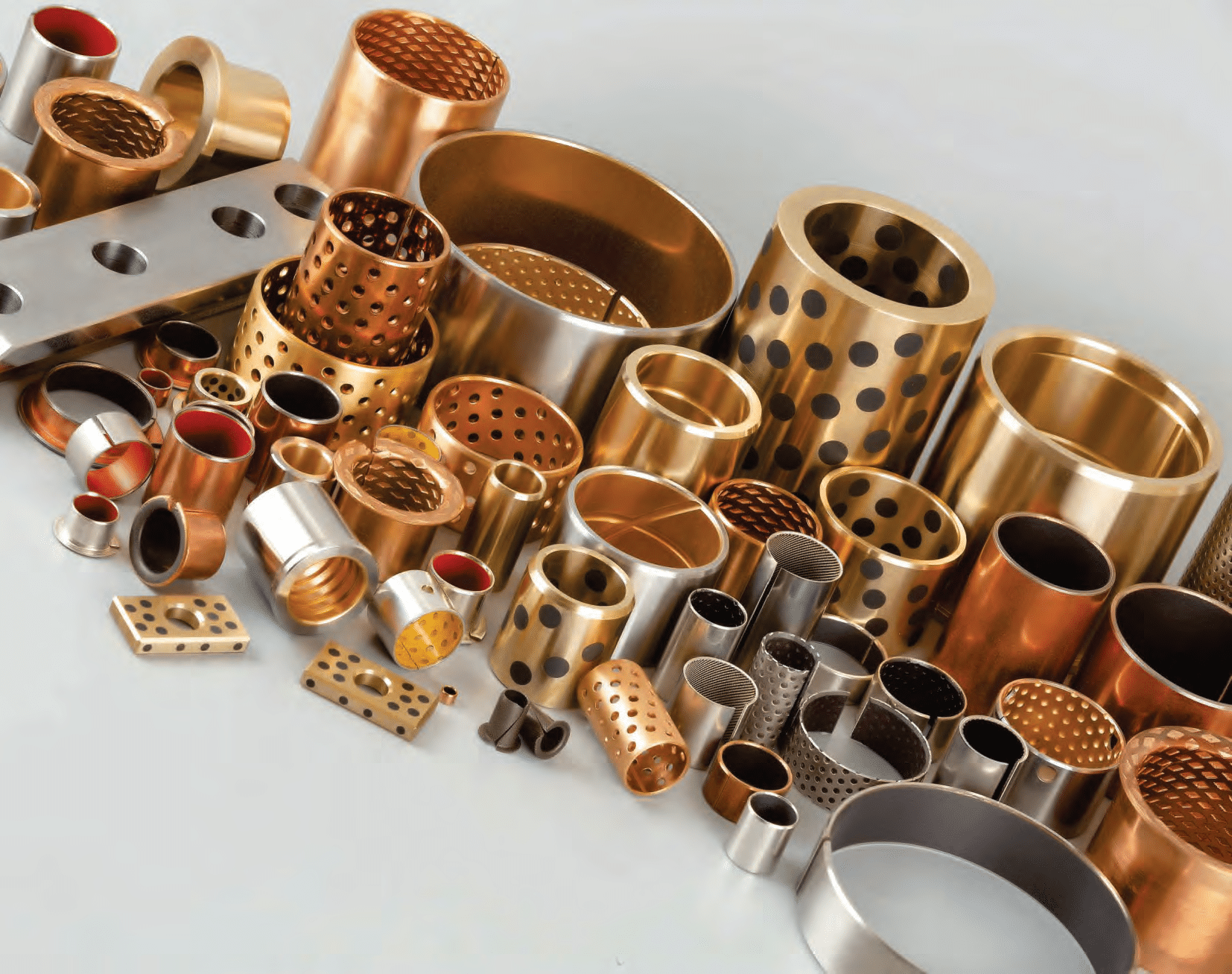
Bronze and Wrapped Steel Bushes
Choosing Between Bushings and Bearings The decision to use a bushing or a bearing depends on several factors, including the specific application and environmental conditions:
- Load and Force: If your application involves heavy loads or significant axial forces, traditional bearings may be the better choice. On the other hand, for low-load, high-velocity scenarios, bushings are highly effective.
- Precision and Noise: If precision and noise reduction are critical considerations, bushings are the go-to option. They excel in providing stable, quiet, and reliable performance.
- Maintenance Requirements: If you prefer a low-maintenance solution, self-lubricating bushings offer extended service life without the need for frequent lubrication, reducing operational downtime and costs.
bushings and bearings both play essential roles in machinery and mechanical systems. While bearings are the heavy-duty workhorses suitable for high-load applications, bushings shine in precision, noise reduction, and self-lubrication. The choice between them hinges on the specific demands of your application and the environmental conditions it will face. By understanding these differences, you can make an informed decision that ensures optimal performance and longevity for your machinery.
Choosing between a bushing and a bearing for your application is crucial, as it directly impacts the performance and longevity of your machinery or equipment. To make the right choice, consider the following factors:
- Load and Speed:
- Determine the load and speed requirements of your application. Bearings are better suited for high-speed and heavy-load conditions due to their rolling element design. If your application involves lower loads and speeds, bushings may be sufficient.
- Precision and Tolerance:
- Bearings offer higher precision and tighter tolerance control, making them ideal for applications where precise shaft positioning is critical. Bushings are generally less precise but may be suitable for less demanding applications.
- Friction and Wear:
- Bearings typically produce less friction and wear compared to bushings, resulting in longer service life. If minimizing friction and wear is a top priority, consider using bearings.
- Space Constraints:
- Evaluate the available space in your application. Bearings can be more compact than bushings, making them advantageous in tight spaces.
- Cost:
- Bushings are often more cost-effective than bearings. If budget constraints are significant, bushings may be a more economical choice.
- Maintenance:
- Consider the maintenance requirements of your equipment. Bearings may require more regular maintenance, such as lubrication, whereas bushings can be more maintenance-free.
- Environmental Conditions:
- Assess the environmental conditions your equipment will operate in. Bearings may be better suited for extreme temperatures, corrosive environments, or situations with contaminants, as they can be sealed more effectively.
- Radial and Axial Loads:
- Determine whether your application requires support for primarily radial loads (perpendicular to the shaft) or axial loads (parallel to the shaft). Some bearings are designed specifically for axial loads.
- Shock and Vibration:
- If your application experiences significant shock or vibration, consider bearings with shock-absorbing features or additional dampening elements.
- Expertise and Application Knowledge:
- Seek advice from engineers or specialists with experience in your specific industry or application. They can provide valuable insights into the best choice for your needs.
In summary, the decision between a bushing and a bearing depends on a combination of factors, including load, speed, precision, space constraints, cost, maintenance requirements, environmental conditions, and load direction. By carefully evaluating these factors and considering the specific demands of your application, you can make an informed choice to ensure optimal performance and longevity.
Your expert in self-lubricating Bearing
and Bronze alloys – serving globally
Brand replacement products and functionally equivalent parts, alternative solutions
Manufactures flange bronze bearings, service & maintenance companies to meet the exacting specifications required in a wide range of industrial applications.
Machined bronze bushing that meet the exacting requirements & specifications supplied by our clients. Spherical bearings, spindles, semi-spheres and supports that we have manufactured.
You will find to follow a selection of self lubricating bronze bearing material CuSn7Zn4Pb7, CuSn12, CuAl10Fe5Ni5,
CuZn25Al5Mn4Fe3
Alternative solution,We offer an outsourced machining service for bronze bushes, manufacturing precise parts to the designs supplied to us by our clients.
Selection of other composite bushing material of self lubricating bearing that we have manufactured.
Wrapped Bronze Sleeve Bearing, Are you interested in our products?
Manufacturer of bimetal and steel bronze bushing parts according to client’s drawing.

